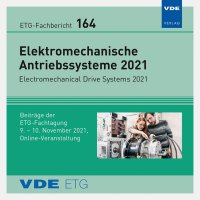Inductively powered Linear Direct Drive with multiple Armatures
Konferenz: Elektromechanische Antriebssysteme – Electromechanical Drive Systems 2021 - ETG-Fachtagung
09.11.2021 - 10.11.2021 in Online
Tagungsband: ETG-Fb. 164: Elektromechanische Antriebssysteme 2021
Seiten: 6Sprache: EnglischTyp: PDF
Persönliche VDE-Mitglieder erhalten auf diesen Artikel 10% Rabatt
Autoren:
Mittag, Marcel; Gundelsweiler, Bernd (Institute of Design and Production in Precision Engineering, University of Stuttgart, Germany)
Inhalt:
Linear direct drives are characterized by high dynamics and positioning accuracy. They are designed as a moving coil or moving magnet system. On the one hand, a system with moving magnets operates without power supply to the armature. However, an increased material and control effort as well as greater latching forces are to be expected caused by the coils being located in the stator. On the other hand, drives with a moving coil system have high dynamics due to the lower moving mass, with less cooling possibilities and require the power supply to be carried along. In pick-and-place applications, where several armatures are usually in use, an additional amount of space is needed for the trailing chains used for this purpose. They are also susceptible to wear and act as an additional disturbing force on the armatures. Conductor rails provide an alternative, but they pose a safety risk due to possible sparking. Inductive energy transmission, which is already established in many sectors, also has potential for use on an industrial scale. Particularly in the area of linear direct drives, this is not yet the case. This publication describes a possibility to build a multi-armature system with wireless operation capabilities. Due to its design, it can be extended easily to accommodate a large number of armatures, while still keeping the complexity as low as possible. A decisive factor here is the rectification of the voltage on the secondary side, which is achieved by an active synchronous rectifier. Due to the serial-serial design of the transmission system, a constant secondary voltage can be ensured by regulating the primary current. Finally, this results in a concept that offers a controllable and predictable system behaviour for a multi-armature system.


